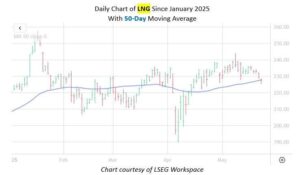Fair Isaac (NYSE:FICO) stock dropped big on Wednesday – more than 15%. In fact, the stock has plummeted almost 23% in the last two days and is down about 30% from its highs in December, about 6 months ago. It was trading at about $1,704 per share at the end of market close yesterday.
Could it drop lower – another 25-30%? What about 40% to $1,000 levels?
Well, here’s the concern – even at $1,704 per share the stock isn’t cheap. It trades at close to 60x last twelve months’ cash flow. Not 16 times, rather 60 times. Let’s flip that number, and you get about 1.6% cash flow yield (ratio of cash flow to price). Correct, that’s paltry. Nvidia for context, trades at 50x cash flow, and Nvidia is the AI king in an AI era, and has clocked between 80-100% revenue growth the last few years.
Revenue growth for FICO isn’t bad, about 14%. But this is not Nvidia. FICO revenue growth picked up from the 10% levels over the last few years. But not enough to justify the 60x multiple.
What you pay, matters. Now, FICO was part of Trefis High Quality portfolio (HQ) back in 2024 when it was much cheaper. We construct HQ with an eye toward relative valuation – HQ clocked >91% return since inception and outperformed S&P, Nasdaq, Dow, all of them.
Why Is FICO So Expensive?
Well, margins have been expanding. FICO has been increasing prices – and its operating and cash flow margins have swelled from low 30s – around 32% a few years ago – to now close to 40%.
That is huge. And that’s not easy. The market has been rewarding the margin expansion, until now.
Federal Housing and Finance Agency (FHFA) executive Bill Pulte raised concerns about FICO score pricing, and that resulted in the stock dropping on Wednesday. The reason FICO could increase prices is because it’s the only game in town.
Ever bought a house on mortgage, an auto loan, or even just took out a new credit card? Your lender used the FICO score to see if you qualify for the loan. It’s used all the time. By everyone – all lenders – your bank, credit card companies, and mortgage lenders.
Now much criticism has been made in the last five years, lawsuits have been filed.
What’s Next?
FICO is not going to be able to increase prices. Too much focus of the wrong kind on FICO’s monopoly-like power. Revenue growth will slow down. Margins are not going to expand, might even compress.
All this will mean it should be valued like many other 10% revenue growth companies. That is, assuming it can sustain even that growth.
Sure, FICO is stable, and maybe even more resilient – maybe even more solidly entrenched – think how Microsoft Windows and Office are embedded in large enterprises. But that’s debatable. Microsoft traded at about a 48x multiple and is growing 15% annually. Even at 48x cash flow FICO is going to be at $1,350 per share.
Could it be lower than the 48x that Microsoft fetches? You can judge how much you’d like to pay for FICO.
Why It May Still Be OK – And Not A Time To Panic?
FICO relies on lending volumes. Personal lending – home mortgages, autos, credit cards. There is always a possibility that home buying will turn around. If the Trump administration gets off the tariff horse, and the Fed drops interest rate as inflation actually cools, things can look up. Why? Lower rates will energize home buyers, auto loans, and all sorts of personal loan activity.
As loan activity and volumes pick up, so will FICO revenues. There is a lot of pent up demand for housing. FICO does not need to raise prices for credit score lookup. It just needs more activity. Here is a little more positive perspective on FICO stock: Buy Or Fear Fair Isaac (FICO) Stock?
Balancing Risk-Reward
Comparison as a tool: The purpose of comparing FICO with Nvidia and Microsoft is all about understanding the risk-reward tradeoff of an investment of interest, in this case FICO. In practice, investment decisions are about understanding relative attractiveness. Buy FICO stock, or keep your money as interest earning cash and avoid current market risk associated with FICO? Or buy an ETF on the S&P 500? Is expected return on FICO stock more than that on cash – by how much? What’s the downside risk you bear to earn that extra return on the stock?
Drawing contrast with a specific “anchor” asset, in this case Nvidia and Microsoft, serves as a powerful tool to assess the risk-reward tradeoff.
Note: Always use an appropriate comparison for a ticker. FICO is a “high valuation” stock. For something trading close to 60x P/FCF ratio, using Nvidia and Microsoft as anchors provides a critical perspective on risk-reward. These stock trade at high multiples, too – yet offer much more than FICO.
No matter the trade-off, investing in a single stock can be risky. On the other hand, the Trefis High Quality (HQ) Portfolio, with a selection of 30 stocks, has demonstrated a history of comfortably outperforming the S&P 500 over the past 4-year span. What accounts for this? As a collective, HQ Portfolio stocks achieved superior returns with reduced risk compared to the standard index, with a smoother performance evident in HQ Portfolio performance metrics.
Read the full article here
















